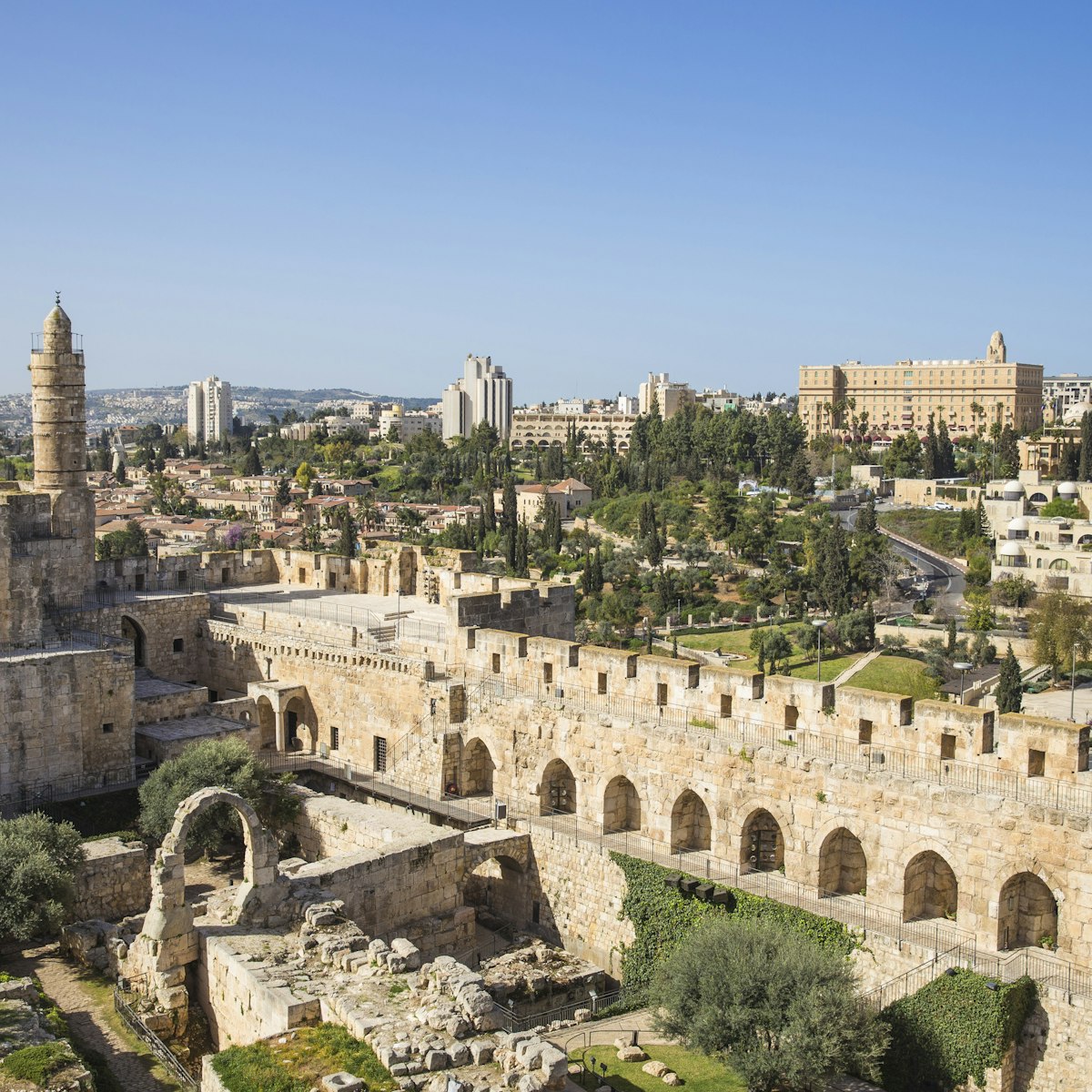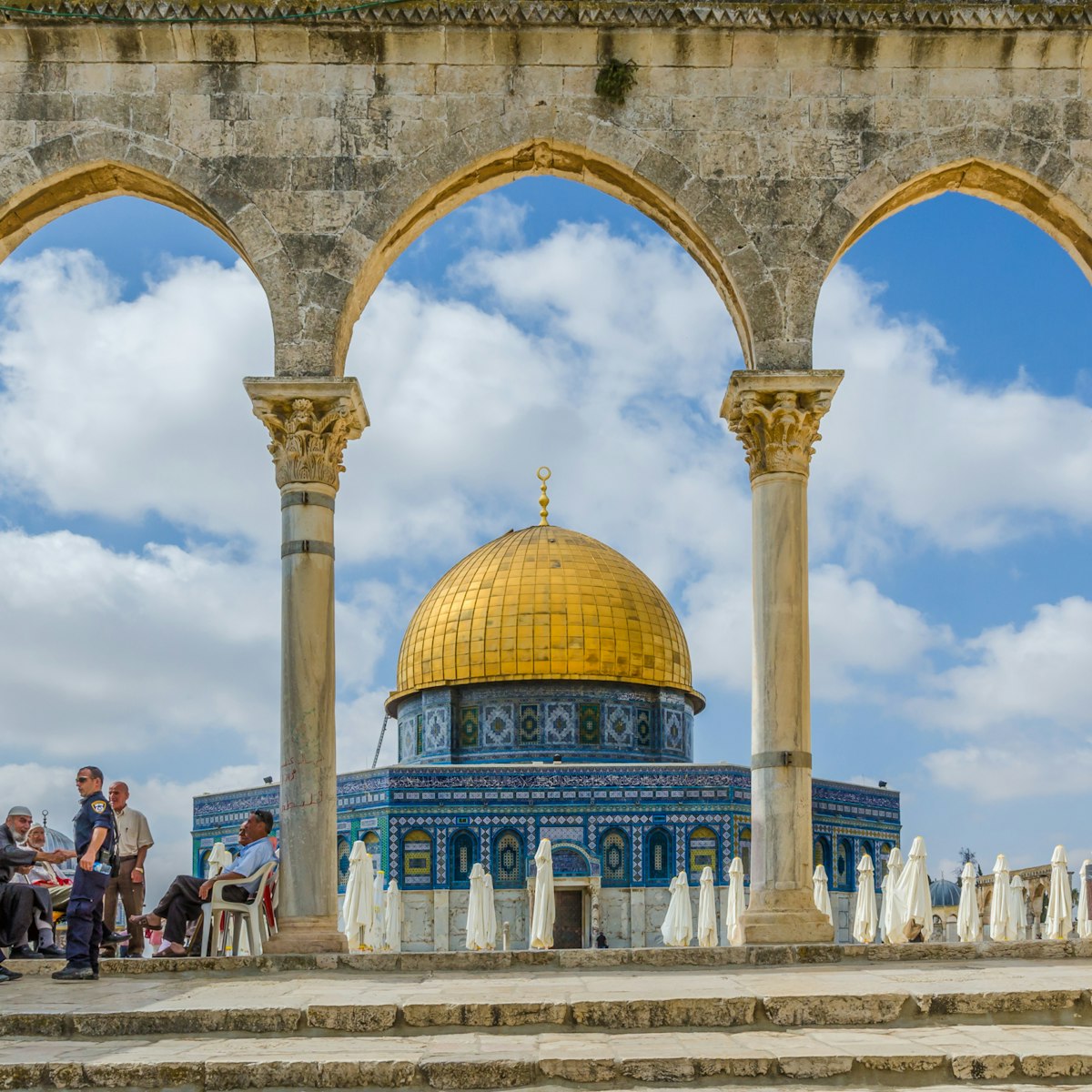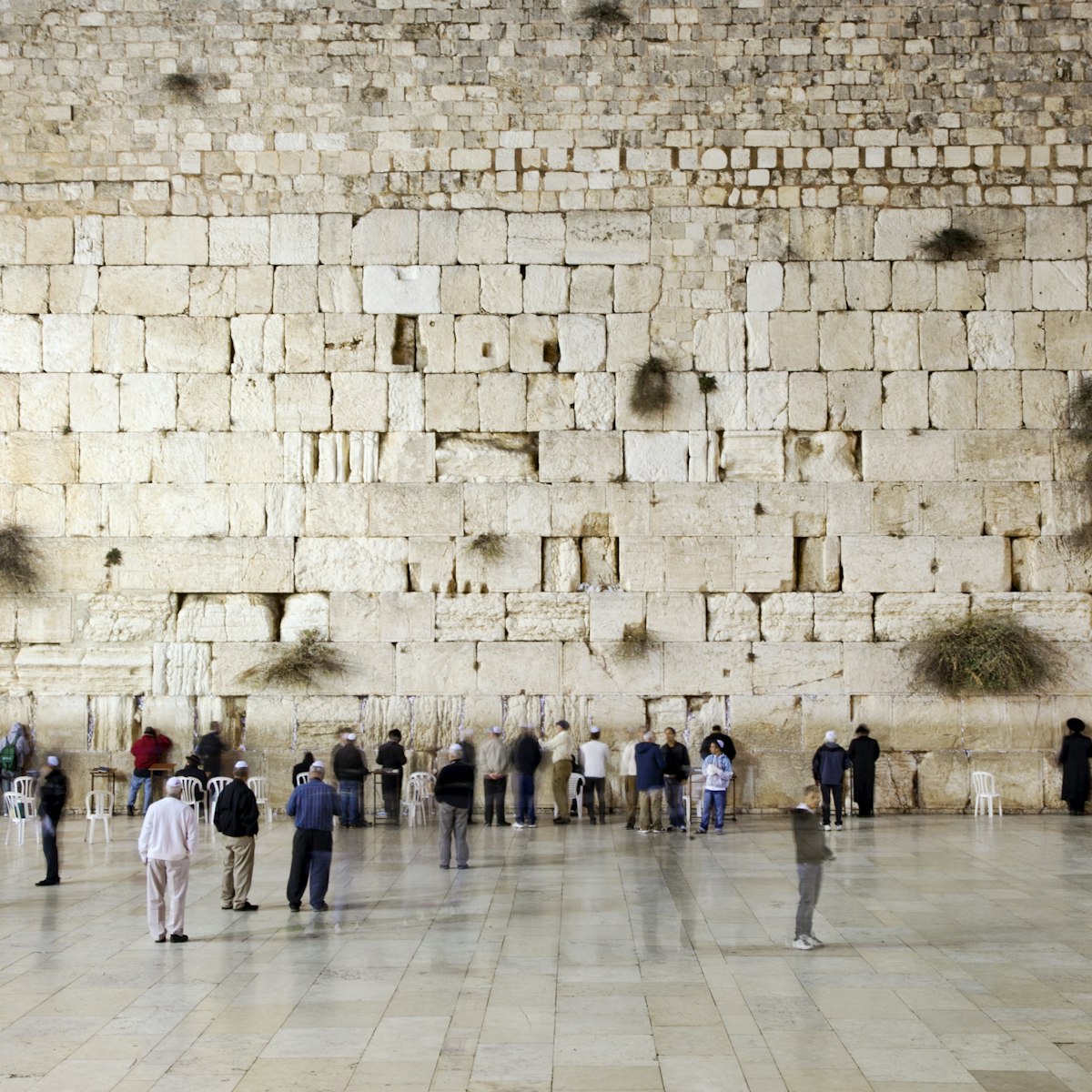While the Dome of the Rock serves more as a shrine than a mosque, Al Aqsa is a functioning house of worship, accommodating up to 5000 worshippers at a time. The name Al Aqsa means ‘farthest mosque’, a reference to the journey Muhammad is believed to have made on his way to heaven to receive instructions from Allah. It's off-limits to non-Muslims, though it can be admired from the outside while visiting Temple Mount/Al Haram Ash Sharif.
Originally built by order of the Umayyad caliph Al Walid (r 705–15 CE), Al Aqsa stands on what the Crusaders thought to be the site of the First Temple and what others believe was a marketplace on the edge of the Temple. Some Christians revere it as the location where Jesus turned over the tables and drove out the moneychangers (Matthew 21:13).
Rebuilt at least twice after earthquakes razed it, the mosque was converted into the residence of the kings of Jerusalem after the Crusaders took the city in 1099 CE. On the death of Baldwin II in 1131, the building was handed over to a decade-old order of soldier-monks, whose members soon began referring to themselves as the Templars after their new headquarters. The order added a number of extensions, including the still-remaining refectory along the southern wall of the enclosure. The other Crusader structures were demolished by Saladin (Salah Ad Din; 1137–93), the first of the Sunni Ayyubid dynasty, who added an intricately carved mihrab (prayer niche indicating the direction of Mecca) to the mosque.
Tragic events have repeatedly occurred at the mosque over the last century. King Abdullah of Jordan (1882–1951) was assassinated while attending Friday prayers here. In 1969, an arson attack by an Australian visitor irreparably damaged priceless religious objects. Israeli metal detectors were temporarily installed at entrances to Al Aqsa in 2017 as a response to the shooting of two Israeli police officers; this prompted bloody clashes and several deaths.








